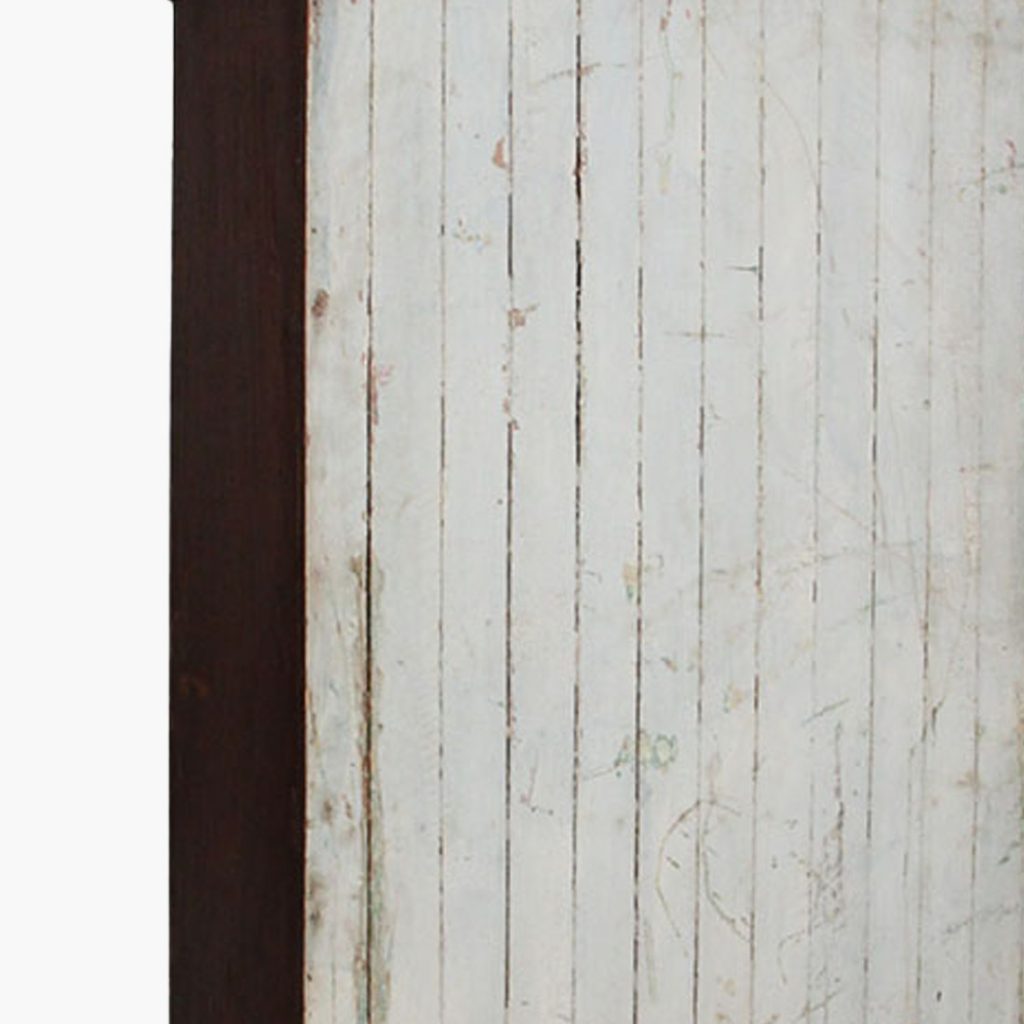




“Do not judge a book by the look of its cover.” – George Elliot, 1860
The backsides of cabinets are often forgotten and overlooked. Most people are less interested in the backside compared to the front. However, for buyers, it is essential always to check the backside of a cabinet.
The backside tells a complete story. Here you can find clues about where it was used for, which region it came from & tell-tale signs of quality and age!
It has a certain attraction; the more you look, the more you will appreciate it. Below you can find some examples of different styles I picked out. What is most common and I reckon it is worth having a closer look.
Every month, we’d like to share some ‘tips & tricks’ for your own business, inspired by our CEO’s expertise in purchasing and restoring wooden furniture.
Kitchen cabinets
It all has to do with the purpose of the cabinet, its quality, its position in the house, and if it was cared for. Simple colorful kitchen cabinets were used inside the kitchen for storage purposes.


They were placed in the vicinity of the door against the wall where a bit of air would come through. Here they kept homemade yogurts and fermented cheeses.
Instead of glass, they nailed an iron mesh, this was to let the air go through but keep the flies out. They would be placed against a wall and in wet monsoon periods the wall would become damp. The dampness of the wall seeps into the wood and the wood would rot away. To protect the cabinet they would hammer a sheet of iron or whatever was available on the backside. I have bought several kitchen cabinets with flattened oil cans on the backside hammered for example.
Here are some more examples of what I find hammered on the backside.


As a buyer, this is the decision time, the internal discussion of beauty combined with originality & functionality. So do I leave the iron on or should I take it off? I have some rules, when the backside iron is a thin sheet of iron or too rusty, I take it off. If it is a nice thick sheet of iron, weathered, painted, or colored then I prefer originality.
Advertisements
Sometimes there is a big surprise on the backside…


Raw & Tribal
“Beauty is in the eye of the beholder.” – Margaret Wolfe Hungerford, 1878
Subjectivity… One can decide for themselves what is true beauty. Weathered, raw, rusty, hacked and axed, rough, patinated, smokey. In tribal areas & villages, where money is not affluent, the locals do not import precious wood and have cabinets commissioned. One takes an axe and wanders into the wild. They look for the right tree and make use of whatever nature is supplying to them.


When time stood still 50-80 years back, artistic brute cabinets were made. In the evening hours after their work is done in the fields, people sit around the fire. The women are cooking and the men hack and chisel away, chatting freely. Children are running around and playing with self-made toys.


These pieces have a true soul and one can see this on the backside.
Fine quality pieces
Paneled, sophisticated, fine wood, craftmanship, commissioned pieces. Cabinets from museums, churches, marine & army, institutions, and administrative offices. Made with Rosewood, Burmese teak, Mahogany, Ebony, and Cane. These types of cabinets breed quality in their veins.


British Colonialism in India
In 1757, Britain increased its control of India through the East India Company. From 1757 – 1858 it controlled much of India. From 1858 onwards, the British government directly ruled India, and it became known as the British Raj. The British Raj had a significant impact on people living in India.
Besides the British, The Dutch, Spanish, Danish, German & Portuguese had forts and strongholds for trading purposes. They all affected India & its culture, and this is reflected in the style of cabinets.


Final words
India is such a big country with so many faces and places. From tribal interiors, mountainous regions, hillsides, jungles to coastal land. We have built up 25 years of good connections. Special objects & commissioned pieces, projects for bars, restaurants & hotels. With our years of experience & contacts, we can find or manufacture it all for our customers.


